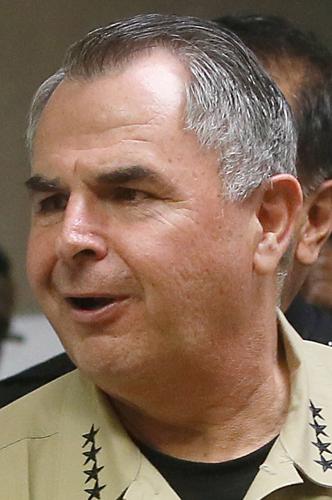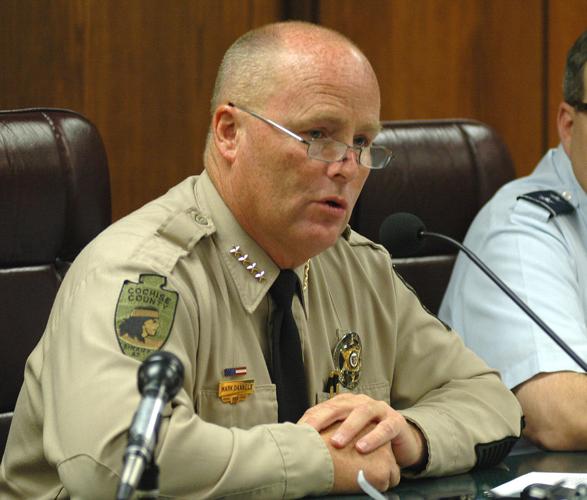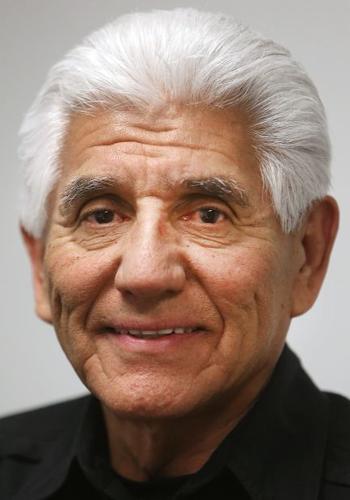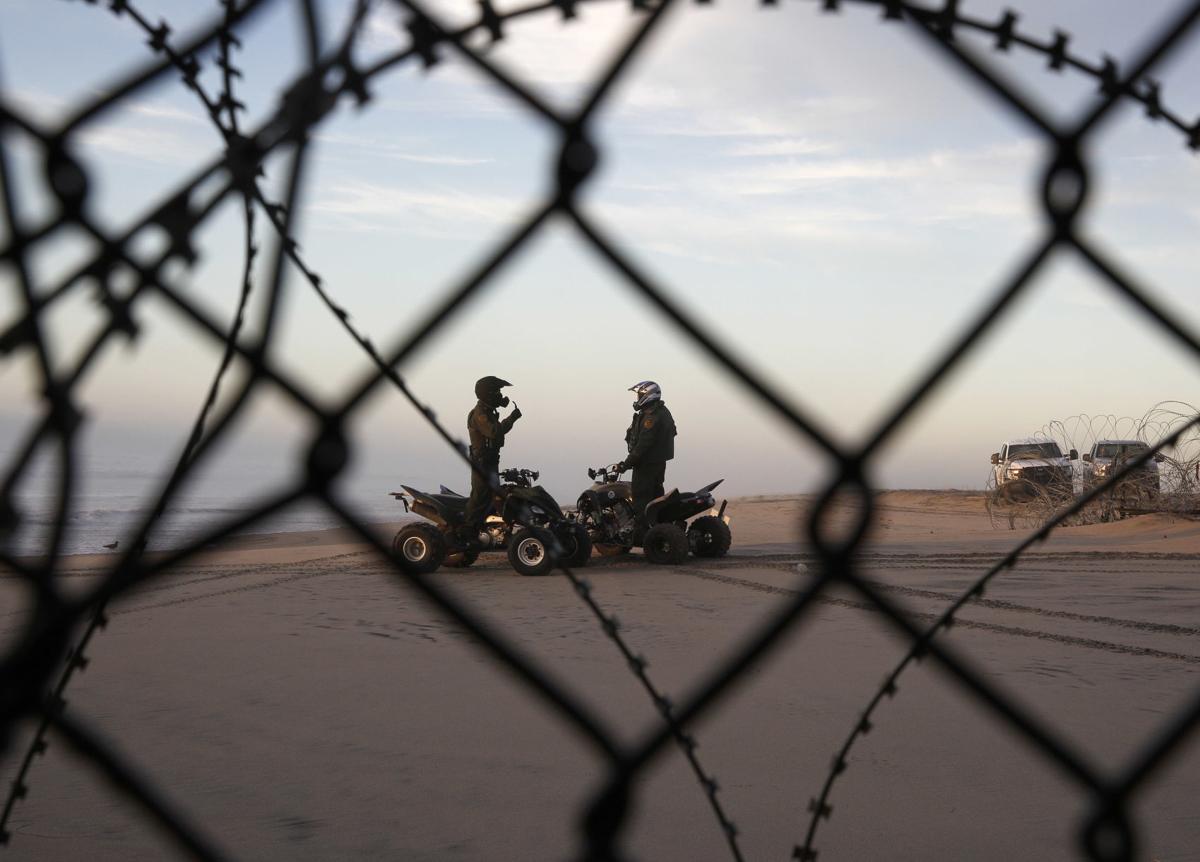As the government shutdown nears its fifth week, border sheriffs are saying “the wall” has become a lightning rod of division and a sound bite that constrains talks on securing the border.
“The term ‘the wall’ gets in the way a lot. It has become this semantic game of what is a wall,” said Pima County Sheriff Mark Napier, a Republican.
“Let’s talk about border security, which part of it will be physical barriers, part of that will be technology and part of that will be human resources,” he said.
Those, along with better technology and staffing at ports of entry, are the main points of a new, three-page statement released by the Southwestern Border Sheriff’s Coalition. Napier said he authored it on behalf of 31 sheriffs in four southern border states.
Napier was among a group of law enforcement officials and others who spoke to President Trump during a conference call Wednesday. He’s also talked to lawmakers in Arizona and nationally about the issue, including “a few Democrats,” he said, “but not as many as I would like.”
In interviews this week, Arizona’s Republican border sheriffs wouldn’t clearly state whether they supported the president’s position to continue the shutdown until congressional Democrats agree to his request for $5.7 billion for 234 miles of new steel barriers.
“There’s enough blame to go around,” said Napier. “The Democrats desperately want to win, the president desperately wants to win. But who should win is not the Republicans or the Democrats, but the American people.”
Yuma County Sheriff Leon Wilmot, also a Republican, said he gives kudos to Trump. “I would imagine the president is standing tall because he’s standing tall for the boots on the ground who are saying this is what we need to adequately do our job,” he said. “I know that law enforcement appreciate the fact he’s standing up and holding Congress accountable.”
But for Santa Cruz County Sheriff Tony Estrada, the lone Democrat among Arizona’s border sheriffs, “it’s so ludicrous that everything is hinging on that magical wall,” he said. “It’s completely absurd, reckless and of no common sense. There are places where it would be practical, an option, but will it be the solution? No.”
About $1.6 billion was allocated for border barriers in the fiscal 2017 and 2018 federal budgets; this includes projects to replace an old landing-mat fence with a tall steel fence, such as one announced for Yuma in November.
There are about 650 miles of fence — pedestrian and vehicle barriers — on the U.S.-Mexico border, plus a double- or triple-layer along 50 additional miles that came at a total cost of $2.3 billion, according to testimony from Customs and Border Protection officials in 2015. Many of the unfenced areas are in Texas, largely due to the Rio Grande and private land issues.
In 2017, Napier made national news when he said in a New York Times podcast that the idea of a wall along the border was a “medieval solution to a modern problem.” Last week, he went on the show again, saying there is a crisis at the border and that physical barriers are certainly part of the solution. He talked about border crosser deaths and crimes committed against migrants on their journey north.
“My position remains the same,” he told the Arizona Daily Star. “The idea that you could put up ‘a big beautiful wall’ and walk away and solve the problem is not an effective solution. A wall that is not monitored, maintained or enforced is an impediment.”
But Trump’s position has evolved, Napier said. “As the president has become more familiar with this issue and has, quite frankly, listened to some of the experts, he is more clear.”
He pointed to Trump’s Jan. 8 address in which he spoke of a humanitarian crisis and, in addition to money for the wall, called for:
- $675 million to “deter and detect narcotics, weapons and other materials crossing our borders;”
- $211 million to hire 750 more Border Patrol agents;
- $571 million for 2,000 additional ICE personnel;
- $4.2 billion for 52,000 detention beds, personnel, transportation and detention alternatives;
- $563 million for 75 immigration judges and support staff.
“I do wish the president would more clearly and more often say what I believe him to mean,” Napier said.
During public appearances and on social media, Trump’s focus remains on the wall. In response to a new group of people traveling from Central America, the president tweeted Tuesday: “… Only a Wall, or Steel Barrier, will keep our Country Safe! Stop playing political games and end the Shutdown!”
In a Jan. 11 roundtable at the White House, Trump said the issue could be settled in 15 minutes. “It’s so simple. We need money for a barrier. If we don’t have a barrier, we’re just wasting all of the other money. There’s no technology that’s any good.”
Physical barriers have worked in some areas, Republican and Democratic border sheriffs say.
In Yuma and Santa Cruz counties, Wilmot and Estrada in part credit the building of fences for reductions in local crime.
But Estrada added that the fence didn’t solve the issues of immigration or drugs.
Most hard drugs come through ports of entry. In 2017, the Arizona Daily Star reported that 81 percent of the 265,500 pounds of hard drugs caught at the U.S.-Mexico border from fiscal year 2012 to fiscal year 2016 were stopped by customs officers at ports of entry rather than by Border Patrol agents.
Estrada said a 23-year-old from Sonora, driving a tractor-trailer, was caught on Dec. 22 at a Nogales port of entry carrying 565 pounds of methamphetamine, 104 pounds of cocaine and 20.6 pounds of fentanyl. “That’s a clear example that drugs are not coming over the wall and the wall is not going to stop that,” Estrada said.
And as long as the demand for drugs is there, he and Napier said, smugglers will find a way. Recently, the third drug tunnel in a month was discovered in Nogales.
A wall would not solve the current migration problem either, Estrada said, because the “majority of people are turning themselves in and the numbers are down in terms of illegal border crossers.”
Apprehensions are at historic lows. Last fiscal year, agents made fewer than 400,000 arrests, compared with more than a million apprehensions in the mid-2000s. The demographics of who is coming have shifted from mostly single Mexican men to Central American families turning themselves in to Border Patrol agents, many seeking asylum.
Just this week, Wilmot said the Border Patrol in the Yuma sector apprehended about 600 people in one day, including a group of 369; most were families.
There’s no silver bullet for securing the border, the sheriffs said.
“There are mountains, waterways, Native American Reservations and environmentally sensitive areas where traditional physical barriers will be difficult, if not impossible, to construct,” the coalition’s statement said. “Some areas are very remote and lack the supporting infrastructure to facilitate a massive construction project of this scale. Even if properly funded and enjoying wide spread public support, it would take many years to construct a wall across the entire border with Mexico.”
What needs to happen, Cochise County Sheriff Mark Dannels said, is for everyone — including border experts such as local law enforcement — to take a holistic look and figure out what can be done better.
“Talk about what’s the best solution to go forward, how much border fence do we really need, how many agents do we need,” said Dannels, a Republican.
“I’m sure the wall will be in that price tag to move forward, but that won’t be the entire price tag.”













